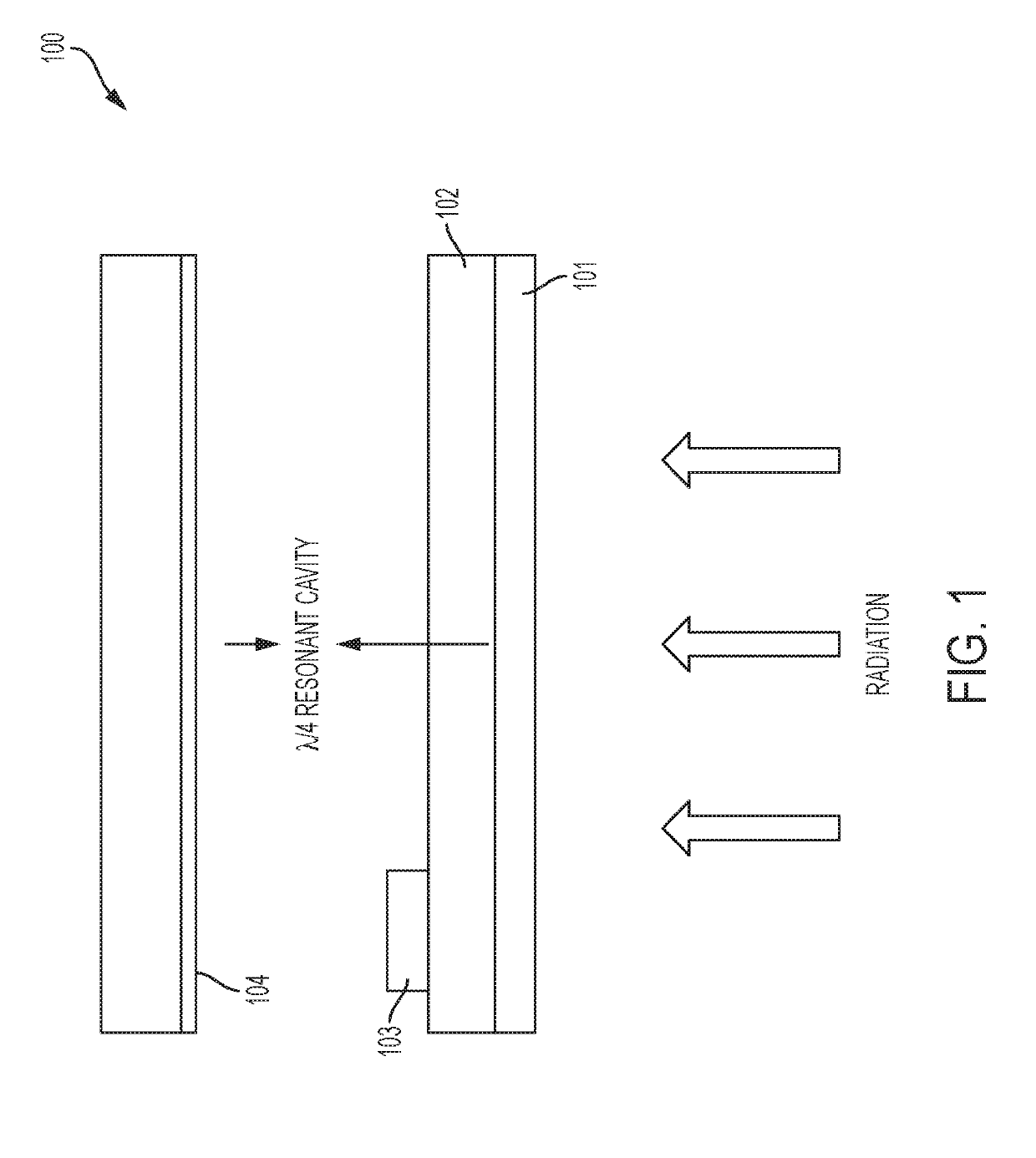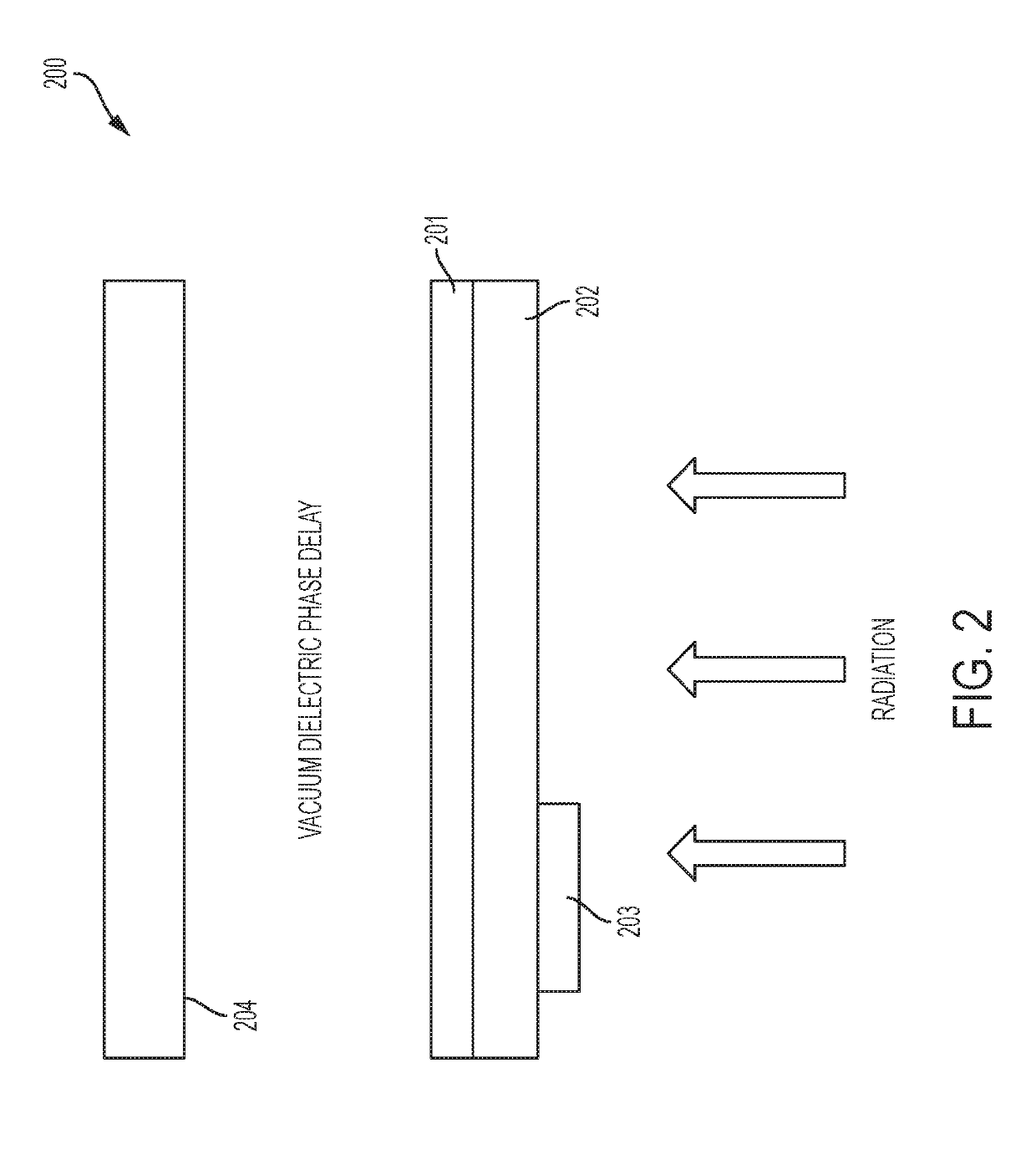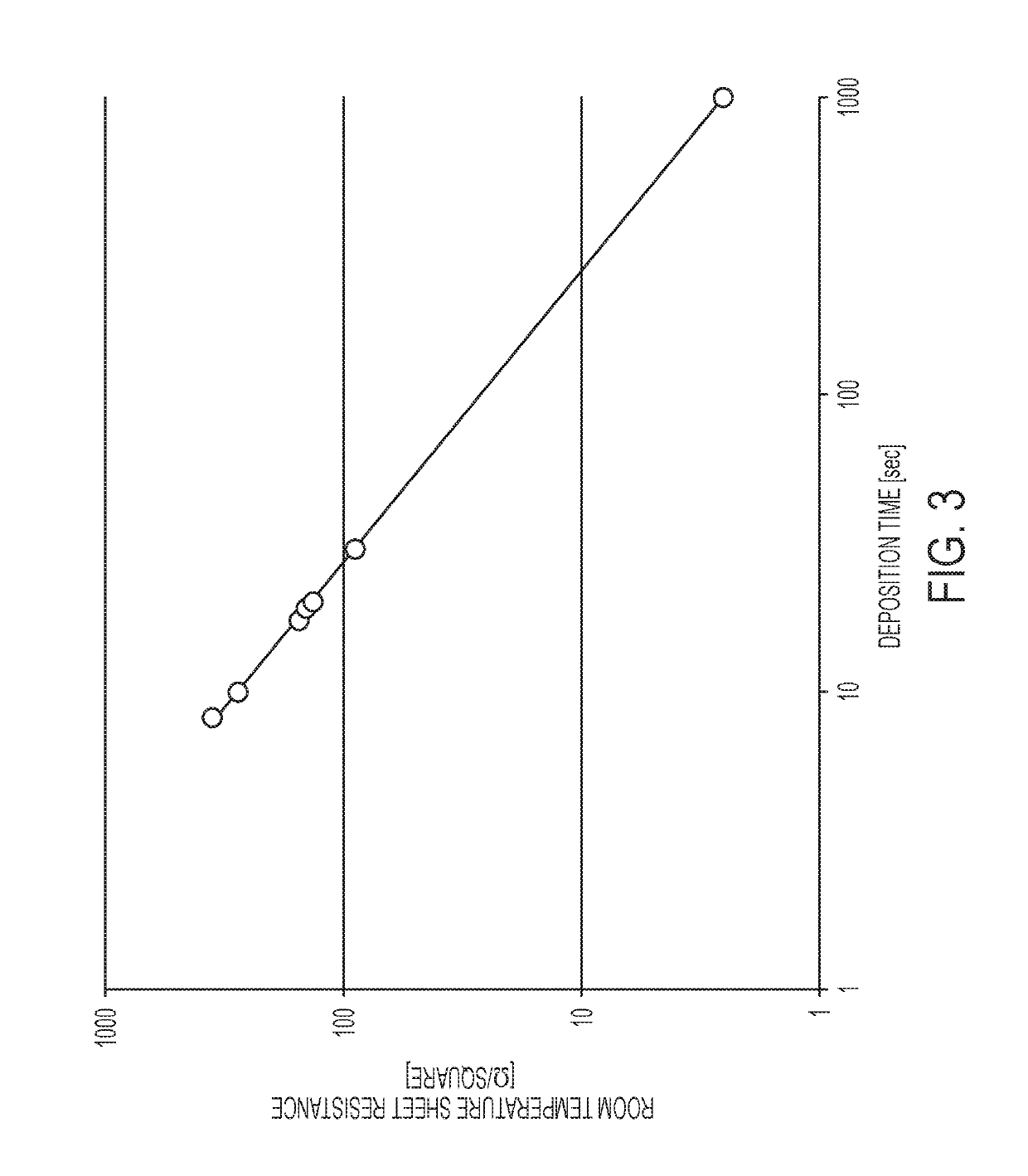Molybdenum nitride absorber coating for a detector
a molybdenum nitride and detector technology, applied in the direction of optical radiation measurement, radiation control devices, instruments, etc., can solve the problems of difficult reproduction of the coating used, aging in the atmosphere, and the heat capacity of ultrasensitive bolometric detectors
- Summary
- Abstract
- Description
- Claims
- Application Information
AI Technical Summary
Benefits of technology
Problems solved by technology
Method used
Image
Examples
Embodiment Construction
[0030]The present invention relates to an electrically thin, molybdenum thin film absorber coating for a detector that is capable of absorbing a fraction of incident electromagnetic radiation over a 1-10 THz spectral range, and, in some instances, over a 1-15 THz spectral range.
[0031]In astrophysics instrumentation, the detection bandwidth is a determining factor in the quality of science value and return on investment. One path for realizing far-infrared (IR) instrumentation operating over a wide spectral band (about 1-10 THz) is to employ bolometric sensors with impedance matched absorbers. In particular, an impedance-matched molybdenum nitride (Mo2N) absorber coating was developed which is one important element of bolometric detector assemblies, which defines the sensor's optical efficiency and angular acceptance.
[0032]More specifically, in order to overcome the issues of the prior art Bi and Ti / Au absorber coatings, which result in transient optical efficiency, among other negat...
PUM
| Property | Measurement | Unit |
|---|---|---|
| thickness | aaaaa | aaaaa |
| thickness | aaaaa | aaaaa |
| thickness | aaaaa | aaaaa |
Abstract
Description
Claims
Application Information
 Login to View More
Login to View More - R&D
- Intellectual Property
- Life Sciences
- Materials
- Tech Scout
- Unparalleled Data Quality
- Higher Quality Content
- 60% Fewer Hallucinations
Browse by: Latest US Patents, China's latest patents, Technical Efficacy Thesaurus, Application Domain, Technology Topic, Popular Technical Reports.
© 2025 PatSnap. All rights reserved.Legal|Privacy policy|Modern Slavery Act Transparency Statement|Sitemap|About US| Contact US: help@patsnap.com



